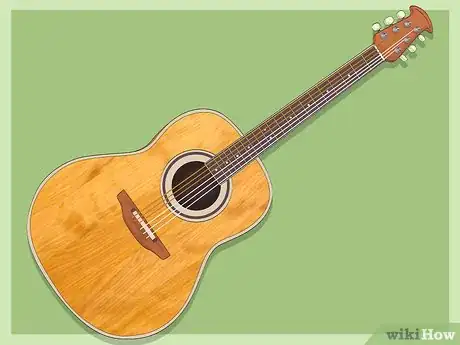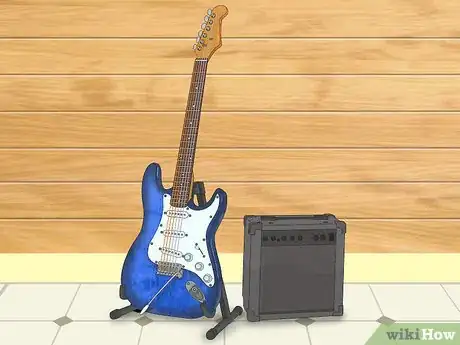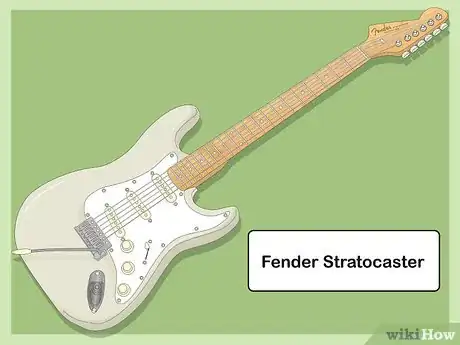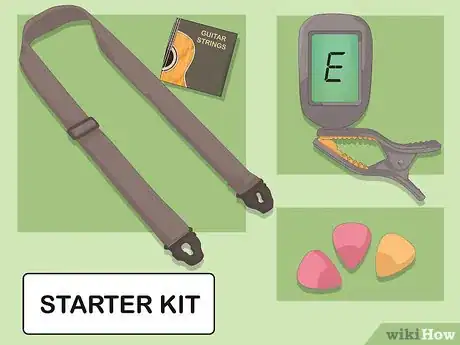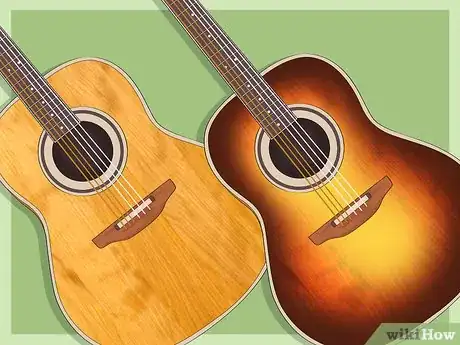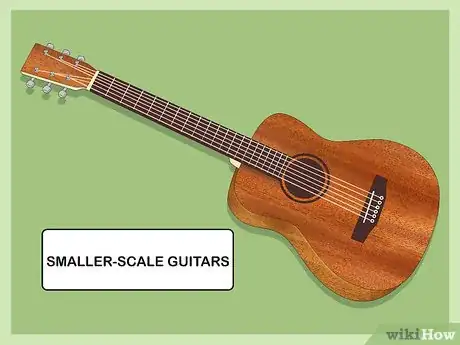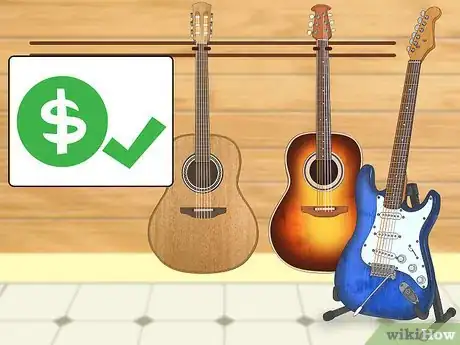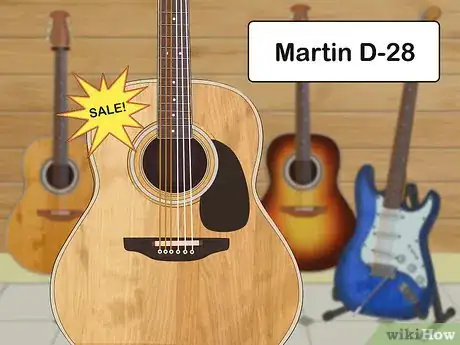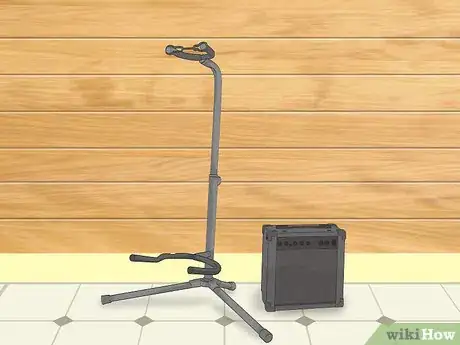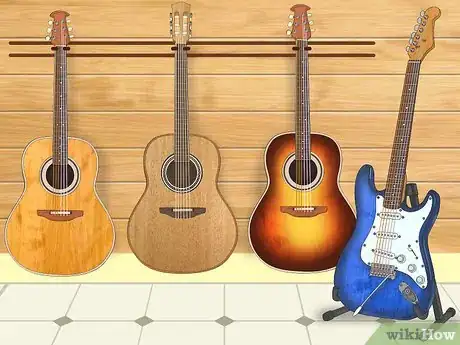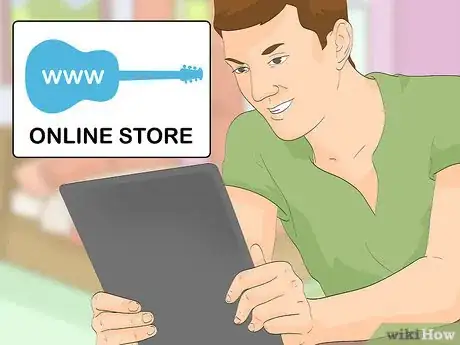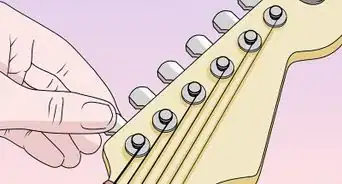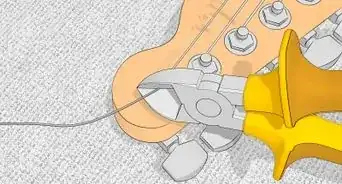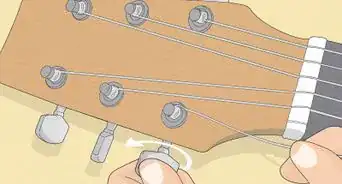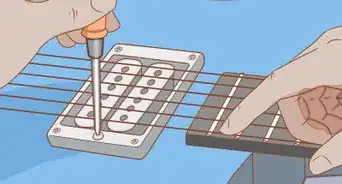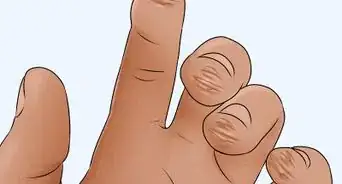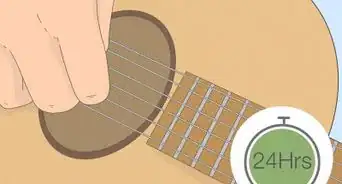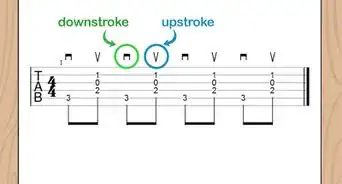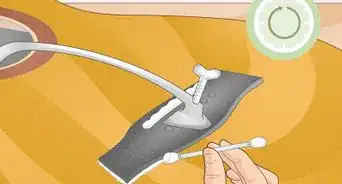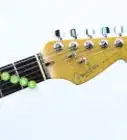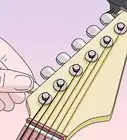This article was co-authored by Ron Bautista. Ron Bautista is a professional guitarist and guitar teacher at More Music in Santa Cruz, California and the Los Gatos School of Music in Los Gatos, California. He has played guitar for over 30 years and has taught music for over 15 years. He teaches Jazz, Rock, Fusion, Blues, Fingerpicking, and Bluegrass.
wikiHow marks an article as reader-approved once it receives enough positive feedback. This article received 19 testimonials and 98% of readers who voted found it helpful, earning it our reader-approved status.
This article has been viewed 848,618 times.
Learning to play the guitar can be exciting and lots of fun. With so many models to choose from, however, picking your first instrument may feel overwhelming. Start by choosing to get either an electric or an acoustic. Then, narrow your options further by choosing the features that suit the style(s) you want to play. Check with brick-and-mortar and online shops to see which specific guitars are available that meet your criteria and budget. Make the purchase, and start playing!
Steps
Choosing Between Acoustic and Electric
-
1Buy an acoustic guitar for a no-frills learning experience. Many people recommend getting an acoustic as your first guitar. You’ll be able to start playing right away, without any accessories as electric requires accessories such as amplifiers. Many instructors also feel like you will be more focused on creating good sounds.[1]
- The steel strings that most acoustic guitars use can be relatively hard on your fingers, however.
- Acoustic guitars are great for all kinds of music, including folk, rock, country, and virtually every other style.
-
2Select a nylon-stringed classical guitar for an easier playing experience. Classical guitars have smaller bodies, making them a little easier to hold. The nylon strings they use are also easier to depress than steel-strings, making this type of guitar gentler on your fingertips.[2]
- Nylon-stringed classics don’t produce as much tone as traditional acoustic guitars. If you want to play quietly, however, this can be an advantage.
- Classical guitars have wider necks than traditional ones. This can make it easier for beginners to fret notes, but if you have small hands, you may find a classical more challenging to play.
- You don’t have to just play classical music to play a nylon-stringed guitar. Willie Nelson, for instance, has played country and folk on a nylon-stringed guitar for many years, and classical guitar is featured in many rock songs, like Metallica’s “Battery.”
Advertisement -
3Get an electric for more versatility. With an electric guitar, you can play in almost any style, from classic rock to indie and beyond. Because electric guitars have special controls (for volume, tone, etc.) and require other equipment (like a cord and amplifier), there’s a little more of a learning curve, however.[3]
- Some beginners avoid buying an electric guitar because they think it will be louder than an acoustic. While it’s true that electrics can get loud, it is possible to play them quietly.
- Practice amps generally play at relatively low volumes. Many have headphone jacks, allowing you to play even more quietly than you could with an acoustic.
- Electric guitars are as versatile as acoustics and can be used for many styles of music, from punk to jazz and everything in between.
Selecting a Particular Guitar
-
1Pick your guitar idol’s instrument. There’s nothing wrong with choosing a guitar just because an artist you love plays it. If you like the music of a certain player, then there’s a good chance you’ll want to play an instrument that will sound similar. Some well-known instruments and players include:[4]
- Fender Stratocaster (Jimi Hendrix, Stevie Ray Vaughan, John Frusciante, David Gilmour, Buddy Guy)
- Gibson Les Paul (Jimmy Page, Duane Allman, Joe Perry, Slash)
- Gibson E-335 (B.B. King, Alex Lifeson)
- Fender Jazzmaster (J. Mascis, Thurston Moore, Lee Ranaldo, Nels Cline)
- Gibson SG (Tony Iommi, Jerry Garcia, Angus Young)
- Danelectro Silvertone (Cat Power, Jimmy Page)
- Martin D-28 (Bob Dylan, Elvis Presley, Joni Mitchell, Michael Mumford)
- Gibson J-45 (John Lennon, Jeff Tweedy)
-
2Purchase a starter kit to make things easy. Most major guitar companies make kits specifically marketed to beginners that contain everything you’ll need to get started. If you just want to start playing as soon as possible, these are a convenient choice.[5]
- Acoustic starter kits typically include an entry-level guitar plus extra strings, a strap, picks, a tuner, and instructional materials.
- Electric guitar starter kits typically include all of the above plus a practice amplifier and cord.
-
3Get the look you want. Guitars have all kinds of finishes and aesthetic features. You can find ones painted solid colors, with effects like metallic finishes, painted in colorful patterns, with more natural “sunburst” finishes, and all sorts of other styles. You should try to get a guitar that looks good to you since this can inspire you. Just keep in mind that looks matter but aren’t everything. Above all, you’ll want a guitar that sounds good and is easy to play.
-
4Look into smaller-scale guitars. Several manufacturers produce three-quarter and half-sized guitars. If you’re young and just starting out, these can be more comfortable for you to play. Quite a few adult players use smaller-scale guitars, too, either for the slightly different sound or because they are more comfortable to play.[6]
-
5Try out lots of guitars. Until you play several guitars, you won’t know for sure which one is just right for you. If you have the chance to visit a guitar store, go there and play a few. Don’t be intimidated! The salespeople will be happy to help out a beginner. Hold the guitars and play them a bit (or ask a salesperson to play something for you) so you can hear what the guitar sounds like. Think about things like:[7]
- How heavy is the guitar?
- Does the neck feel comfortable in your hand?
- How wide is the guitar? Does your playing arm fit comfortably over the top of it?
- How complicated are the controls (for electric guitars)?
EXPERT TIPRon Bautista is a professional guitarist and guitar teacher at More Music in Santa Cruz, California and the Los Gatos School of Music in Los Gatos, California. He has played guitar for over 30 years and has taught music for over 15 years. He teaches Jazz, Rock, Fusion, Blues, Fingerpicking, and Bluegrass.Professional Guitarist & Guitar Instructor
 Ron Bautista
Ron Bautista
Professional Guitarist & Guitar InstructorPay attention to the sound and the feel of the guitar. When you're purchasing a guitar, it needs to feel good in your hands and it needs to sound good to your ears. Ask yourself if you like holding it, if you can put it into a comfortable position. Give the strings a pluck to see if they sound like they're good quality.
-
6Know what to expect and bring a friend. While the salespeople at your local guitar store are expected to help and be patient with you, you should also do your research on guitar brands and their reputation so that you are not completely diving into murky waters, although it is important to keep an open mind. You are more likely to go for a guitar that looks better than it sounds if you are a beginner, which is totally acceptable to do so as long as you do not forget to keep in mind the basic check-marks such as the weight, size, and controls and how comfortable you are with them. It is always advisable to bring someone, preferably a friend, who has experience with the instrument.
Budgeting
-
1Buy the best guitar you can afford. You might be worried about spending too much money on guitar before fully committing to learning how to play. At the same time, the cheapest guitars can often be difficult to play or keep in tune. This can be really frustrating and actually discourage you from practicing. There’s no need to break the bank, but if you really want to play guitar, try to buy the best one you can reasonably afford.
- Decent acoustic and electric guitars can be purchased new for a few hundred dollars.
- There are solid budget options (under two hundred dollars) in both categories.
- The brand is not as important as the quality of the material--if the guitar stays in tune, produces a decent tone, and feels comfortable to play, it is just fine for a beginner.
- If you’re unsure which guitars will provide quality within your price range, ask sales staff for help.
-
2Don’t overlook used guitars. Many quality instruments are sold used at significantly reduced prices. Good guitars tend to hold up well over time, so if you see something like a used Stratocaster or Martin D-28 for sale at a good price, snap it up.
- Used acoustic and electric guitars can be found at local instrument stores, through online classifieds, and even major online music retailers.
-
3Save enough to buy the accessories you need. Once you’ve got a guitar in hand, you can start playing. However, a few extras can make the experience better, and ultimately inspire you to play more. Along with your guitar, pick up things like:[8]
- A small practice amp and a guitar cord (if you buy an electric)
- A guitar strap
- Picks (medium gauge are best for beginners)
- A case or stand to hold your instrument when you’re not playing it
- Extra strings
- A tuner
Making the Purchase
-
1Visit a brick-and-mortar store for full service. If you’re just starting out on guitar, it’s very helpful to actually hold and play a few instruments before you buy. On-site sales staff can also instantly answer any questions you may have, and give you advice on choosing an instrument and learning to play.[9]
- Smaller shops may have more attentive staff, while larger stores may have a larger selection to choose from.
-
2Shop online for your guitar for more options. Online music stores will typically have a very large range of guitars to choose from. If you know you want a particular guitar, this can make the buying process easy.[10]
- Many online retailers also sell used instruments. You can usually find options on online classified and auction sites as well.
-
3Make sure the retailer has a good return policy. After getting your guitar, you might discover that there’s a problem with it. Or, you might decide after a few days that playing the guitar just isn’t for you. For situations like these, it’s helpful if the retailer you buy from has a reasonable policy regarding returns, exchanges, and refunds.[11]
Community Q&A
-
QuestionHow do I buy a guitar online?
 Community AnswerResearch the guitar you are wanting, listen to its sound quality, and make sure that you are buying from a trusted store. A guitar center is your best bet -- see if you can get a deal on one. Don't buy it because it looks cool either. Another thing is talk to professionals.
Community AnswerResearch the guitar you are wanting, listen to its sound quality, and make sure that you are buying from a trusted store. A guitar center is your best bet -- see if you can get a deal on one. Don't buy it because it looks cool either. Another thing is talk to professionals. -
QuestionShould I buy an acoustic or classical guitar?
 Community AnswerClassical guitars have nylon strings which you may find more comfortable for your fingers. A classical guitar may be more comfortable to hold. The downside for classical guitars is that the neck is wider. Try holding both to see which you like the best. Also, listen to the sound each one makes, as that should really clinch the choice for you.
Community AnswerClassical guitars have nylon strings which you may find more comfortable for your fingers. A classical guitar may be more comfortable to hold. The downside for classical guitars is that the neck is wider. Try holding both to see which you like the best. Also, listen to the sound each one makes, as that should really clinch the choice for you. -
QuestionWhich is a good guitar for Western music?
 Community AnswerA steel string acoustic guitar generally has a more country/rock/western sound to it than the sound of a classical guitar.
Community AnswerA steel string acoustic guitar generally has a more country/rock/western sound to it than the sound of a classical guitar.
References
- ↑ https://parlor.guitars/blog/expert-advice-choosing-your-first-guitar
- ↑ https://parlor.guitars/blog/expert-advice-choosing-your-first-guitar
- ↑ https://spinditty.com/instruments-gear/How-to-Choose-the-Best-Electric-Guitar-for-Beginners
- ↑ https://reverb.com/news/the-reverb-guide-to-buying-your-first-guitar
- ↑ https://reverb.com/news/the-reverb-guide-to-buying-your-first-guitar
- ↑ https://parlor.guitars/blog/expert-advice-choosing-your-first-guitar
- ↑ https://spinditty.com/instruments-gear/How-to-Choose-the-Best-Electric-Guitar-for-Beginners
- ↑ https://reverb.com/news/the-reverb-guide-to-buying-your-first-guitar
- ↑ https://spinditty.com/instruments-gear/How-to-Choose-the-Best-Electric-Guitar-for-Beginners
About This Article
Whatever your budget and musical tastes are, if you take the time to research well, you can find the perfect guitar for you. Acoustic guitars are great for learning chords and some simple melodies, and they sound great without you having to buy an amp. Electric guitars are better for playing rock and blues music and learning your favorite solos. You’ll need to invest in an amp to get the full package, but you can use headphones with many amps if noise is an issue. Head down to your local guitar or music shop and check out the different models to find one that you like the feel and sound of. However, you don’t need to buy new if you don’t have the budget for it. You can get used guitars pretty cheap from online retailers or resale websites like Craigslist. For more tips from our Guitar co-author, including how to choose accessories for your new guitar, read on!
